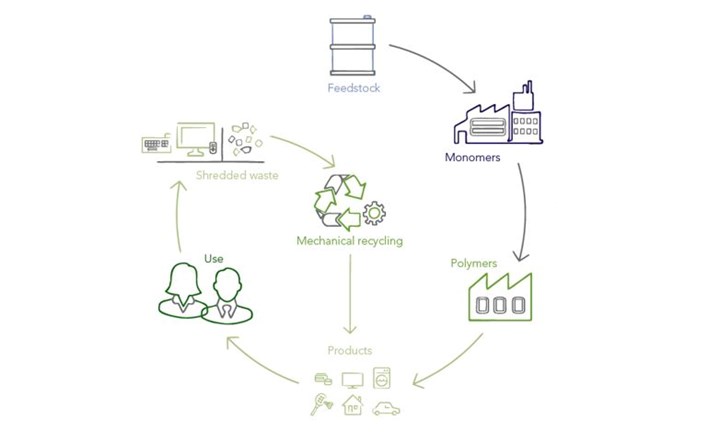First Fully 'Bioattributed' ABS
Ineos Styrolution’s Terulran Eco grades are based on renewable feedstock according to ISCC-certified mass balance approach.

What is said to be the world’s first fully ‘bioattributed’ ABS was recently launched by Ineos Styrolution. Terlurlarn Eco resins complement the mechanically recycled Terluran Eco ABS grades that were introduced earlier. In fact, the company says they represent the final jigsaw piece in its PS and ABS portfolio, now consisting of mechanically recycled and ‘bioattributed’ solutions for all three products lines, Styrolution PS, Terluran standard ABS, and Novodur specialty ABS.
The new Terluran Eco grades are based on renewable feedstock which can be used as a replacement for conventional feedstock for all three components ABS components (acrylonitrile, butadiene and styrene monomer), according to an ISCC-certified mass balance approach. This approach allows the maximization of the renewable feedstock in the material while minimizing the CO2 footprint. Only additives will come from conventional feedstock.
These materials have been introduced at two levels--Terluran Eco B60 and as Terluran Eco B100. Terluran ECO B60 grades contain bioattributed content from styrene monomer from renewable sources, and Terluran ECO B100 grades contain the complete bioattributed solution with bioattributed content from all three monomers. The bioattributed products are said to have identical physical and mechanical properties as their counterparts based on conventional feedstock, as well as all the same regulatory documents available.
Related Content
-
Prices Up for All Volume Resins
First quarter was ending up with upward pricing, primarily due to higher feedstock costs and not supply/demand fundamentals.
-
Lanxess and DSM Engineering Materials Venture Launched as ‘Envalior’
This new global engineering materials contender combines Lanxess’ high-performance materials business with DSM’s engineering materials business.
-
The Effects of Time on Polymers
Last month we briefly discussed the influence of temperature on the mechanical properties of polymers and reviewed some of the structural considerations that govern these effects.












